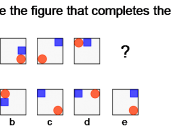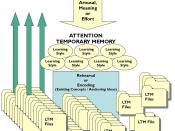Cognitive information processing (CIP) is not associated with the work of a single theorist; rather, it builds on the work of a number of researchers who share a common paradigm. Like the behaviorists, CIP theorists are concerned about observable behaviors; but, unlike behaviorists, they use those behaviors to make inferences about underlying mental processes that cannot be directly observed. The basic CIP model is concerned with fundamental mental operations, mainly how we perceive and remember events and information.
According to Solso (2001) there are three basic assumptions with regards to information processing model:
1.Cognition can be understood by analyzing it into a series of (mostly) sequential stages.
2. At each stage unique processes take place on incoming information. The eventual response (e.g. "Yes, I know where that is") is assumed to be the outcome of these stages: perception, coding the information, recalling the information from memory, concept formulation, judgment, and language production (Solso, 2001).
3. Finally, after each stage receives this information from prior stages it performs its unique function.
What are some of the historical forces behind the development and the neurocognitive revolution? Cognitive psychologists are seeking neurological explanations for their findings, and in turn in order to explain these observations neuroscientists are turning to the cognitive psychologist (Solso, 2001). As stated previously cognitive psychologists observe behaviors to make inferences about mental operations (e.g. detection, storage, and use of information), whereas, neuropsychologists (or neuroscience) study the relationships between neurosciences and cognitive psychology, using the theories of the mind that deal with memory, sensation and perception, problem solving, language processing, motor function, and thinking. Such techniques that have been investigated are MRI, PET, EEG, and show not only the structures of cognition but also the process involved (Solso, 2001).
It is a combination to these two sciences that are...

